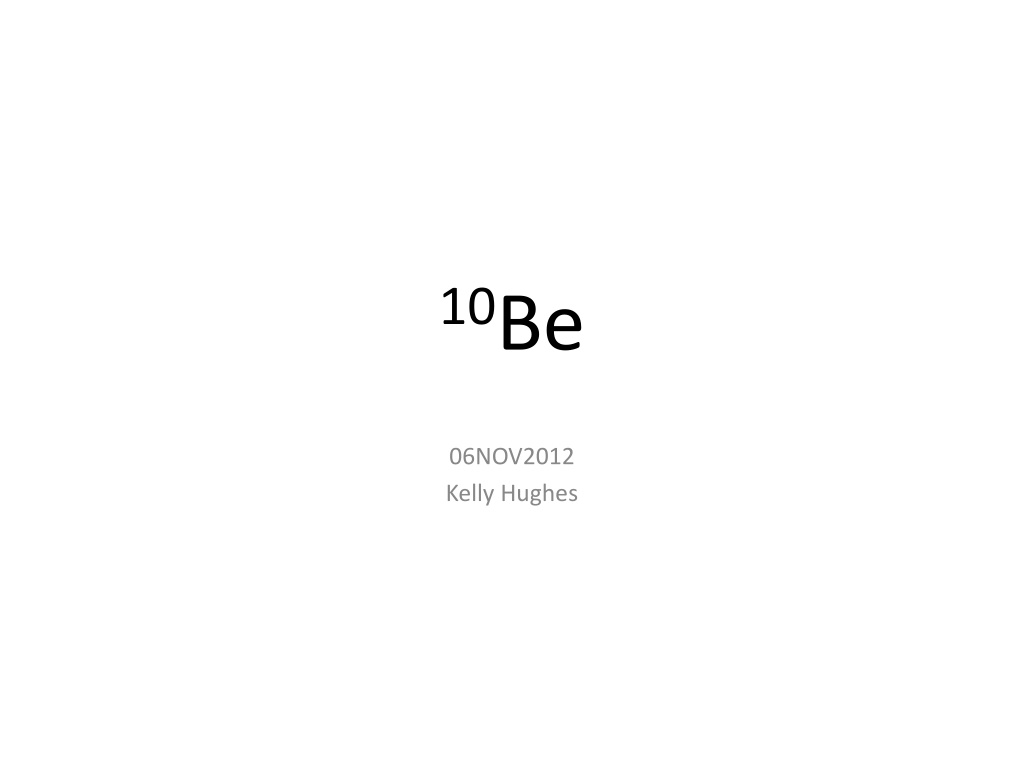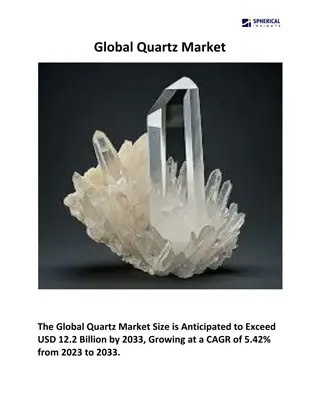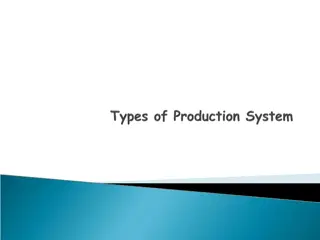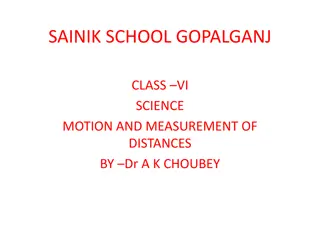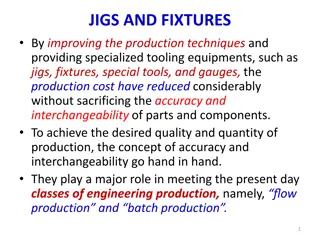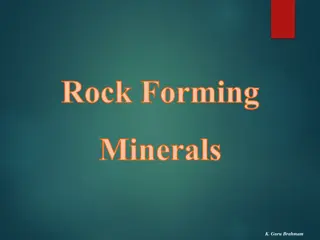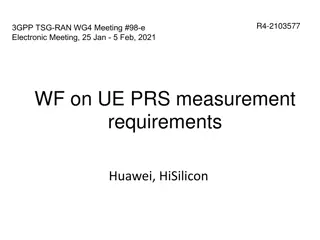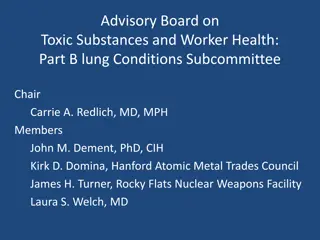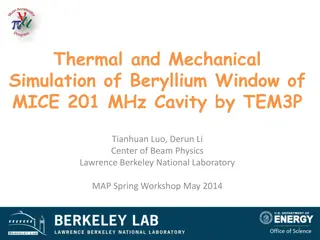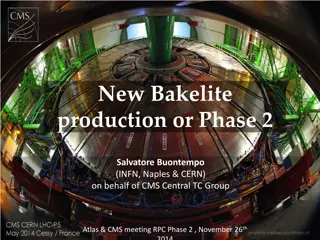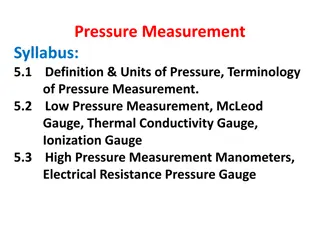Production and Measurement of Beryllium-10 in Quartz
Beryllium-10 (10Be) is produced through cosmic ray spallation and muon-reduced reactions, with production rates influenced by factors like altitude and latitude. Measurement involves accelerated mass spectrometry on pure quartz samples, where the ratio of 10Be/9Be is determined relative to a standard. Understanding the production and concentration of 10Be in minerals like quartz provides insights into exposure ages and helps establish secular equilibrium.
Download Presentation

Please find below an Image/Link to download the presentation.
The content on the website is provided AS IS for your information and personal use only. It may not be sold, licensed, or shared on other websites without obtaining consent from the author.If you encounter any issues during the download, it is possible that the publisher has removed the file from their server.
You are allowed to download the files provided on this website for personal or commercial use, subject to the condition that they are used lawfully. All files are the property of their respective owners.
The content on the website is provided AS IS for your information and personal use only. It may not be sold, licensed, or shared on other websites without obtaining consent from the author.
E N D
Presentation Transcript
10Be 06NOV2012 Kelly Hughes
How is it produced? Cosmic Ray Spallation: 10Be results from 16O being bombarded with highly energetic cosmic rays Muon-reduced reactions: Unstable subatomic (-) charged particle interacting w/ target elements Stopped muons Fast muons
Spallation-Dominated Fig. 3. Production rate of 10Be in quartz as a function of depth at sea level and high latitude. The total production is a composite of the production by neutron spallation, stopped muons, and fast muons. Ivy-Ochs & Kober, 2008
Production Rate Fig. 2: Production of rate of 10Be in quartz as a function of geomagnetic latitude and altitude (based on STONE 2000). The production rates have been normalized to sea level and high latitude. At low latitude, production rates are lower than at high latitude. Production rates increase exponentially with increasing altitude. Ivy-Ochs & Kober, 2008
Concentration of 10Be Where P(0) is the production rate at sampling site (atoms/g/yr) t is the exposure age (yr) is the decay constant (yr-1) is the density of the rock (g/cm3) is the erosion rate (cm/yr) is the attenuation length, length at which the probability has dropped to 1/e that a particle has not been absorbed (g/cm2) Cin is the inherited nuclide concentration (atoms/g) Ivy-Ochs & Kober, 2008
Secular Equilibrium Fig. 5: Increase in concentration of the radionuclides 10Be, 26Al, 36Cl and the stable nuclides 3He and 21Ne with time. Secular equilibrium, where production of radionuclides equals radioactive decay, is approached after 3-4 half- lives. The secular equilibrium concentration sets the limit of the maximum exposure age that can be determined with a given radionuclide. Ivy-Ochs & Kober, 2008
Method of Measurement Accelerated Mass Spectrometry Pure quartz is obtained by selective chemical dissolution in hot ultrasonic bath and/or on shaker table Carrier of 9Be (0.5 mg in soln) added to pure quartz mineral separate Completely dissolved with concentrated HF and HNO3 Be separated and purified with ion exchange and selective pH precipitations Ratio of 10Be/9Be relative to a standard
Why Date Moraines? Moraines record glacier extent Moraine dates can construct a chronological structure to past glacier fluctuations
Why 10Be? Well-constrained production rate Widely applicable age range (101 to 106 yrs)
Why target greywacke boulders? Greywacke: poorly sorted sandstone, high quartz content Quartz is ubiquitous and highly resistant to weathering Quartz can be cleaned of the meteoric (atmospheric) 10Be Large boulders are more stable than smaller clasts Toppling/shifting can result in inaccurate ages
Improvements to the 10Be Method? Pinning down an accurate half-life; 1.51 Myr and 1.34 Myr both published Combining nuclides checks for continuous exposure vs. intermittent coverage
Reference Ivy-Ochs, S. and Kober, F. Surface exposure dating with cosmogenic nuclides. Journal of Quaternary Science. 2008. v. 57. no. 1-2. p. 179-209
